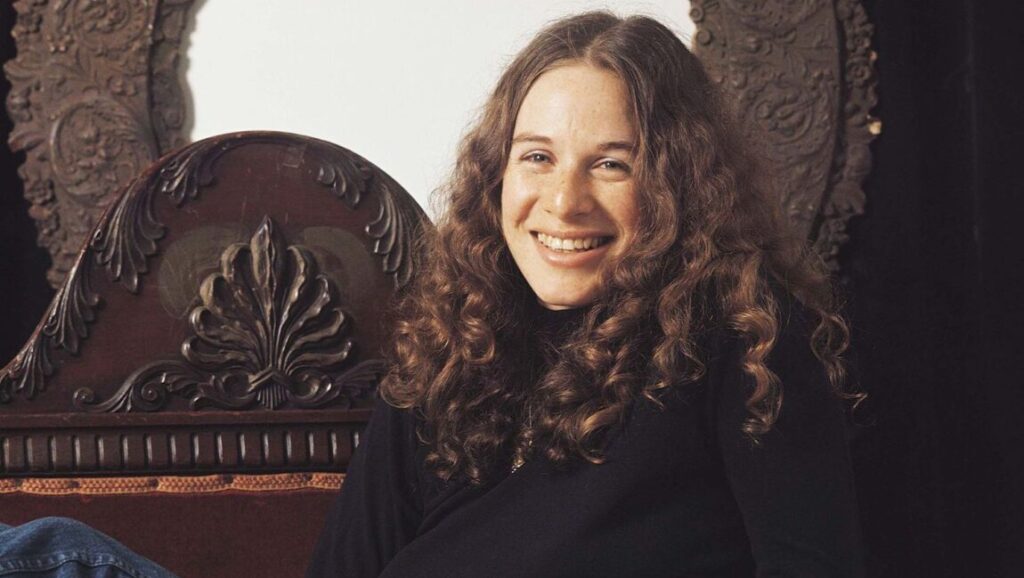“The cat record” is how I identified Tapestry at the age of five — initial fascination with my mother’s scruffy vinyl copy stemming less from its warm musicality and clear-amber songcraft than from its famously candid cover shot, with Carole King’s own tabby, Telemachus, a smoky blur in the foreground. I wasn’t, at that age, given to thinking about the earthy comforts and unaffected self-exposure that the cover represented. I just really liked cats. But it was, of course, the album’s barefoot intimacy — in all aspects of its composition and presentation alike — to which I, like many millions before me, was really responding. Compared to the more derelict or alien-seeming life forms peopling my prime-boomer parents’ album collection, King looked like a person we might conceivably know. More to the point, she sounded like one too: that easy, disarmingly creased voice lends a familiarity to emotions of rare or unknown intensity. Consider the unmediated plangency of the lyric to “It’s Too Late” (“Something inside has died and I can’t hide it”) versus the offhand, half-smiling shrug of its delivery. Here was despair for people with lives to get on with, at some stage or other. Those of us who grew up onTapestry knew what everyday heartbreak sounded like years before we faced it ourselves. On the flip side, the hand-clapping, hair-tossing staccato joy of “I Feel the Earth Move” was primer for our earliest oblivious inklings of carnal ecstasy; with its blunt-but-clean metaphors and kindergarten-singalong rhythm, has any song ever so exuberantly nailed the momentary return to infancy that accompanies sexual climax? King the songwriter finds the everyday in the erotic, which is not to say King the singer finds it boring.
Those of us who grew up on Tapestry knew what everyday heartbreak sounded like years before we faced it ourselves.
Shorthand pop history lists Tapestry as standard-bearer for concurrent and ensuing generations of female singer-songwriters, its DNA detectable in artists as disparate as Tori Amos and Taylor Swift. Yet it’s not exactly a pioneering work; King’s own long-delayed step up to the mike, after a decade’s worth of exemplary pop songwriting, was enabled by the Nyros and Mitchells that came immediately before. Tapestry was released in the same year as Blue, yet it doesn’t sound like quite the same graduating class. Less egg-headed and more melody-bound than some folk-reared industry sisters, with genre-spanning commercial nous from her years in bubblegum and R&B, King was at once an old soul and a forward-thinking crossover artist. Some of the most revelatory moments on Tapestry come when she breathes new life and context into her own songs: in King’s unashamedly cracked rendition of “(You Make Me Feel Like) A Natural Woman,” Aretha Franklin’s bulletproof avowal of romantic need becomes a quasi-spiritual expression of second-wave feminist optimism. For all its wholemeal sentiment — scoff if you will, but King’s original, superior recording of “You’ve Got a Friend” must be among the most exquisitely sincere creations in the modern American songbook — Tapestry is not an album without cunning or calculation. That aforementioned cover art, right down to the eponymous hobbycraft project (stitched by King herself, natch), was designed to construct King in the public imagination as, yes, a natural woman in a field of outsize icons and intellectuals. We can see through the positioning to some degree today, not least because the album’s staggering success established a model of integrity for pop music still evident in sundry unplugged sessions and self-worth anthems. Yet “the cat record” lives (and lives, and lives) on the crystalline ingenuity of songs — be it the salty storyteller’s glee in “Smackwater Jack” or the bruised yearning of “So Far Away” — with nothing to hide. Only the cat itself remains out of focus.
Part of Kicking the Canon – The Album Canon.


Comments are closed.